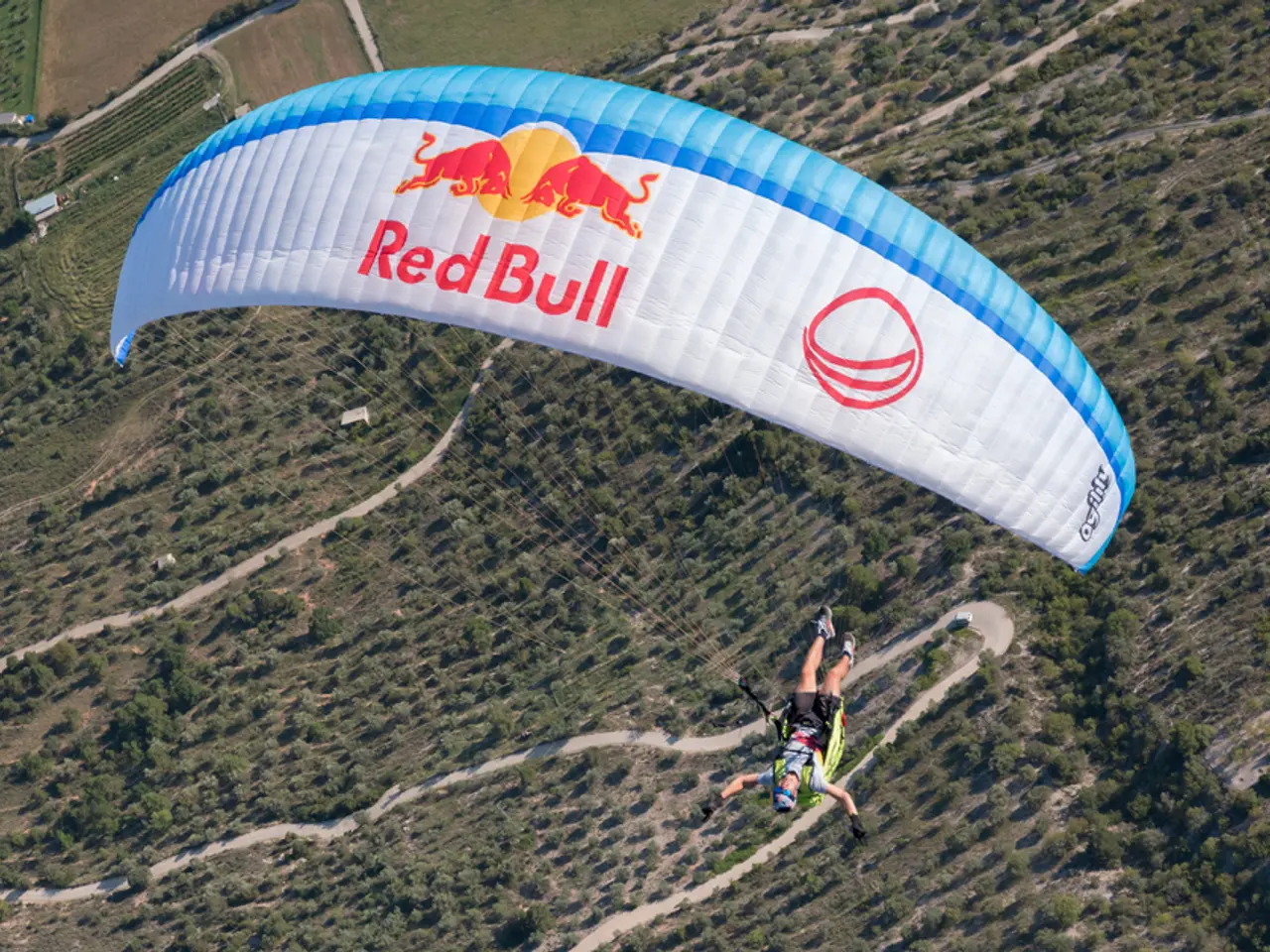Three Stages of Skydiving: Freefall Plunge, Parafoil Deployment, and Final Descent
Discover the exhilarating world of skydiving with Skydive Orange, a renowned company offering tandem skydives that promise an unforgettable experience.
Skydiving is a thrilling adventure consisting of three distinct phases: freefall, parachute deployment, and landing.
During freefall, you'll experience weightlessness at 120 mph, starting from the moment you exit the plane and ending with parachute deployment. This initial stage offers a surge of adrenaline followed by a sense of pure freedom, with the wind rushing over your body, akin to a big hug from the sky. The typical duration of freefall can range from 30 to 60 seconds, depending on the altitude of exit, and at Skydive Orange, it lasts about 45 seconds from 13,500 ft.
Parachute deployment is the process of releasing and inflating the parachute to transition from freefall to a controlled descent, slowing everything down for a soft, cushy landing. Instructors at Skydive Orange use the toggles attached to lines, attached to the canopy, to manipulate its shape and induce certain turns. They will also slow your parachute down to almost a complete stop just before reaching the ground to ensure a soft landing.
The third and final phase is landing, where safety is enhanced by preparing the landing area, clearing it of debris/hazards, and having the guidance of your instructor.
Safety is of utmost importance during skydiving. Instructors at Skydive Orange are certified professionals who ensure safety in freefall through specialized equipment. The skydiving parachute system includes two parachutes: the main parachute and the reserve parachute. The main parachute is deployed based on altitude, usually around 5,500 ft, using an altimeter as a reference. The reserve parachute is used as a backup in case the main parachute malfunctions. It is heavily regulated, inspected, and repacked every 180 days by an FAA-certified parachute rigger.
An Automatic Activation Device (AAD) is implanted within the parachute system and is used to initiate the reserve parachute deployment sequence should the skydiver fail to deploy the main parachute before a certain altitude at a certain speed. Additionally, the drogue, a small parachute deployed as soon as terminal velocity is reached, helps counteract the increased weight of two skydivers and slows the descent.
So, are you ready to embark on an unforgettable journey and experience the thrill of skydiving with Skydive Orange? Book your tandem skydive today and prepare for an experience that will leave you breathless and yearning for more!
Read also:
- Stopping Osteoporosis Treatment: Timeline Considerations
- Tobacco industry's suggested changes on a legislative modification are disregarded by health journalists
- Trump's Policies: Tariffs, AI, Surveillance, and Possible Martial Law
- Expanded Community Health Involvement by CK Birla Hospitals, Jaipur, Maintained Through Consistent Outreach Programs Across Rajasthan








